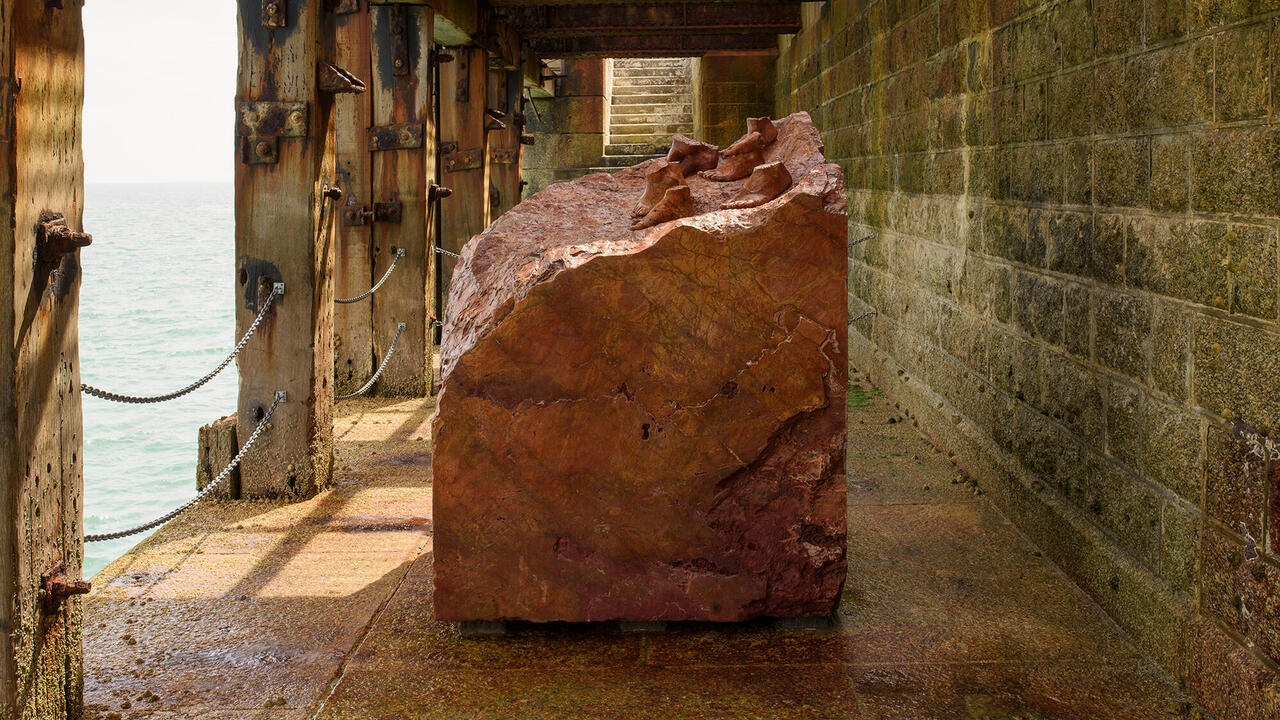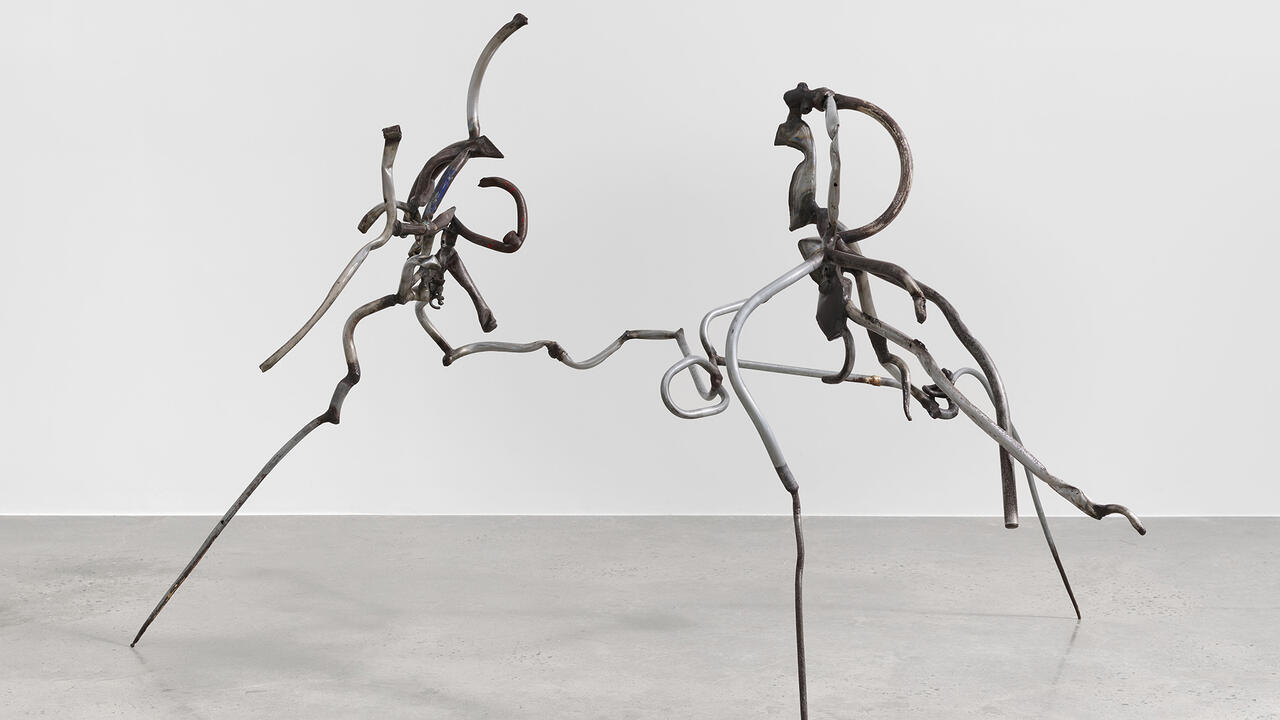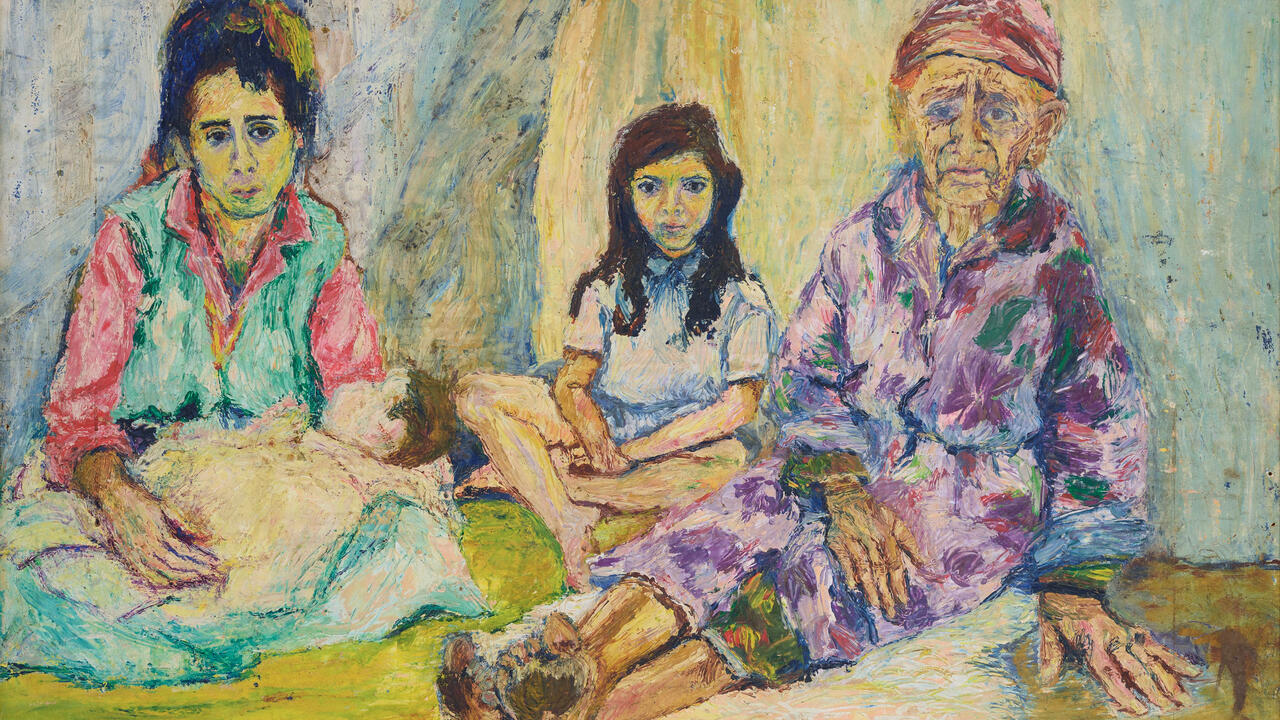‘A Tempered Utopianism’ – 58th Venice Biennale: Giardini Part 2
From demanding choreographies to ‘the sea of our subconscious’, further highlights from the National Pavilions in the Giardini
From demanding choreographies to ‘the sea of our subconscious’, further highlights from the National Pavilions in the Giardini

‘Dear Visitor,
Do you know in what time you are living? Is it a time that is better than the one you once knew, or is it much worse, filling you with pessimism? We know the homilies that claim this is the best and worst of times, but the fact is that we cannot really answer this question.’
In the courtyard of the Swiss Pavilion in the Giardini, bathed in morning sunlight as the unseasonably dense cloud has momentarily thinned, a performer is reading me a letter written by gender theorist Judith Butler. It is one of 15 responses to artist-duo Pauline Boudry / Renate Lorenz’s titular theme, ‘Moving Backwards’ (2019), and reproduced in a newspaper handed out as part of the presentation.
For some, ‘backwards’ describes a contemporary political reality. For others, it suggests a means of escape, both hypothetical and literal: inside the pavilion, a 23-minute film – the presentation’s centrepiece – opens with a figure dressed in black (the New York-based dancer and choreographer Marbles Jumbo Radio) moving across the stage with their trainers on back-to-front; the action references a tactic used by Kurdish guerrilla women to throw enemies off their tracks in the snowy mountains.

Jumbo Radio is joined by a group of four other performers – including Werner Hirsch, another long-term Boudry/Lorenz collaborator, who is the person that reads Butler’s letter to me in the courtyard. Most of the participants are gender non-binary, as is often the case in the duo’s films. What follows is a dance by turns surreal (a stiletto dragged along the floor; double-toed cowboy boots) and somehow ecstatic. The pavilion is very dark and very empty, save for a single screen and a shimmering sequinned curtain that moves across it to partition the space at the film’s opening and close. The curtain references earlier Boudry/Lorenz films, as well as the spaces and aesthetics of drag – indeed, of camp – which the pair have frequently mined for their works. When the film finishes, the space lights up like a dancefloor – a nod, perhaps, to the nightclubs that have long been safe spaces for queer culture, but which – in places like my home city of London – are increasingly under threat from rising rents and the general absorption of alternative culture by the mainstream.
I like the bizarreness of Boudry/Lorenz’s language (offset nicely by the impeccable poker faces of their films’ protagonists) and its concision, at the root of which always lies a consideration of multiplicity – whether of gender, identity, nationality, even direction of motion. The idea that these things are performed rather than fixed is hardly radical (cf. Butler, for example); nor, particularly in queer aesthetics, is that of the utopic potential of the dancefloor (cf. the late José Esteban Muñoz, cited in the artists’ statement). But, across the pavilions in this year’s Giardini, dance crops up time and again as a form of temporary, open and democratic community – implicitly or explicitly in opposition to that of the nation state itself. (Song performs the same function in the Australian Pavilion, where Angelica Mesiti’s three-screen installation, ‘Assembly’ 2019, uses the collective voice to propose an alternative, or additional, communal agency to the democracy embodied in the halls of government where her films are shot.)

In the Brazilian Pavilion, another artist duo – husband-and-wife team Bárbara Wagner and Benjamin de Burca – present a new film (Swinguerra, 2019) centred on dance subcultures popular in Recife, on Brazil’s northeast coast, where the pair are based. We watch three groups as they rehearse different dance styles – swingueira (whence the piece’s title, with the punning modification to include guerra, or war), brega funk and passinho do maloca– that originate in the favelas on the outskirts of the city; almost all of the dancers are people of colour. Brazil was the last large economy to abolish slavery, in 1888, and its slave ports were the biggest in the Americas. The country, particularly the northeast, where its sugar plantations were concentrated, is riven by the imbalances in economic and political power that are the result of this legacy. The dancers waist-roll, body pop and shake until the sweat pours off them, forming up and dancing off against one another in groups, like some crazily sexed-up version of the Sharks and the Jets in West Side Story (1957). They wear crop tops, booty shorts, body stockings. Many of the dancers are gender non-binary – not that it matters anyway, since the boys primp and preen and throw shade just as much as the girls. Hypermasculinity and hyperfemininity are both poses to be performed. These dancers know their visual allure and their physical power; the demanding choreographies are designed to impress.
With its super-slick images, chiaroscuro outdoor settings and tightly composed frames – at one point, some of the dancers lean through a mint-green metal playground structure, whose triangular forms echo the diamond mesh of the fishnets they wear – passages of Swinguerra look like a music video. A hyperstylized choreography of hyperstylized choreographies, the film takes on an almost fictional quality. It is hard to know what has been staged for the camera and what hasn’t – or whether that even makes sense as a question, since everything is a performance here. And, while the politics of representing black bodies are massively fraught (both Wagner and De Burca are white), Swinguerra is closer in spirit to Beyoncé’s Lemonade (2016) than Jennie Livingstone’s documentary Paris Is Burning (1990). It feels like an affirmation – more important than ever during Brazil’s current, far-right-wing Jair Bolsonaro presidency – of the self-expression of communities that are sensationalized and stereotyped while remaining politically invisible and silenced.
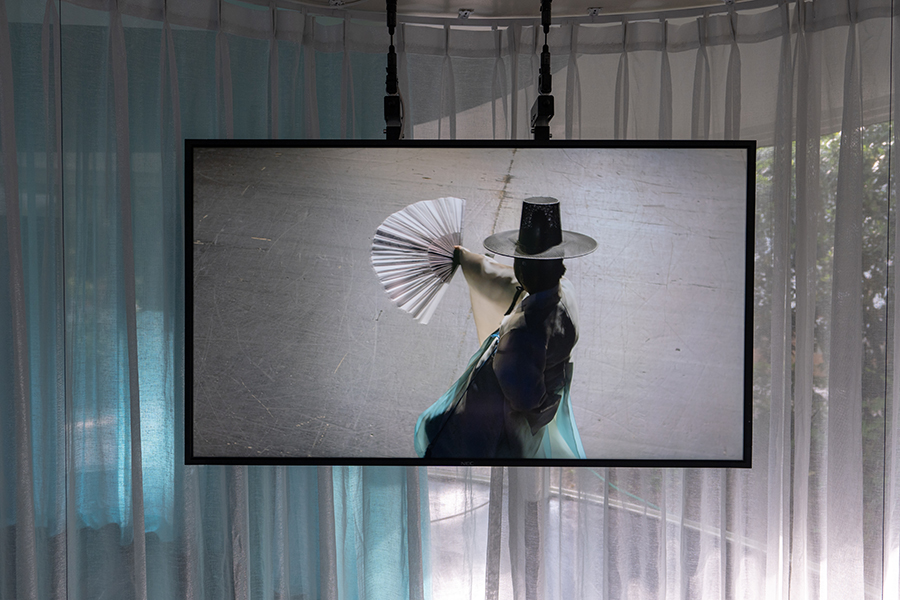
Because slaves had no belongings but their bodies, dance has long been a vital form of expression within and between communities of the African diaspora. In the Korean Pavilion, other histories of ritual and gesture are excavated to suggest different understandings of self and society to those proposed by Western modernity. (Assuming it is even possible to speak of that as a cohesive entity.) For ‘History Has Failed Us, but No Matter’ – which could serve as an alternative title for any biennial, anywhere, over the past decade or longer – curator Hyunjin Kim has assembled three female artists: siren eun young jung, Jane Jin Kaisen and Hwayeon Nam. Each proposes the theatre (shamanic myth, in the case of Jin Kaisen) as a way of understanding identity that is, paradoxically, more authentic than contemporary social models, shaped by a long and deeply ambivalent engagement with the West.
Most compelling is jung’s A Performing by Flash, Afterimage, Velocity and Noise (2019), part of a long-term research project into the theatre genre of yeoseong gukgeuk, in which women play all of the roles. Unique to Korea, yeoseong gukgeuk was popular in the 1950s and ’60s (which is to say during, and immediately following, the Korean War) but has since largely disappeared. In a series of dramatically lit, flamboyantly staged videos, jung presents a performance by a second-generation yeoseong gukgeuk actor (Lee Deung Woo) as well as by four actors who embody contemporary queer performative traditions in Korea. Although enacting a male role, Woo, with her dramatic make up and mesmerizing dance, doesn’t conform to any stereotype of manhood that I recognize – which goes to show the gaping blindspots in my cultural knowledge and, I guess, is partly the point – but, as in the films of both Boudry/Lorenz and Wagner and De Burca, gender is shown to be a set of rules to be bent or disregarded entirely.
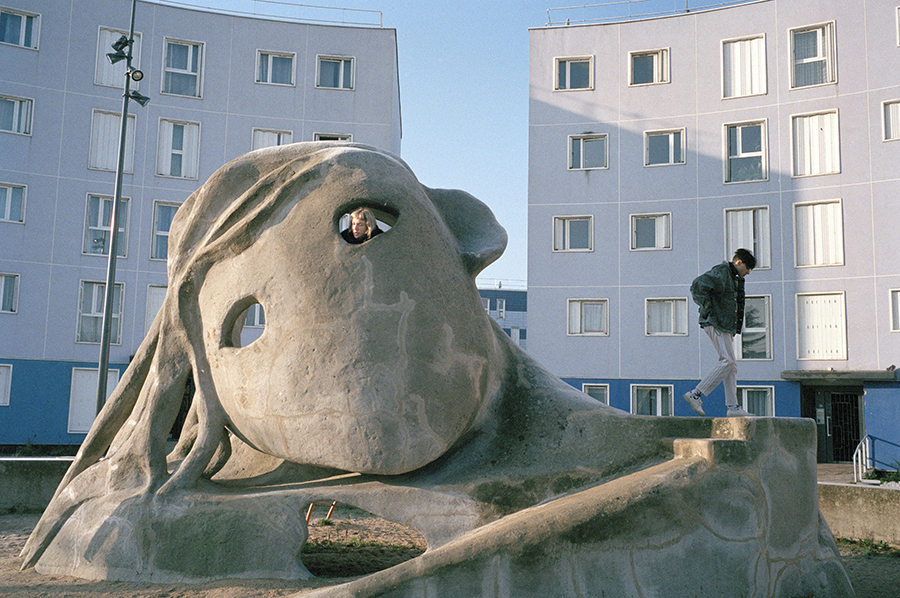
While it couldn’t exactly be categorized as a dance, Laure Prouvost’s film project for the French Pavilion, ‘Deep See Blue Surrounding You / Vois Ce Bleu Profond Te Fondre’ (2019) – an undoubted highlight of the Giardini – does follow a kind of magically carnivalesque procession from the suburbs of Paris to the lagoon of Venice; or, as Prouvost notes in her deliciously accented English in the video at the pavilion’s centre: ‘We are going on a road trip to the sea of our subconscious.’ Or is it an odyssey, replete with tricksters and temptresses and monsters of the deep? (The film is screened at the centre of the pavilion in a chamber of rippling fabric walls that is supposed to evoke the head of an octopus.) We watch from plastic seaside chairs embedded in sandy tributes to French postman Ferdinand Cheval’s extraordinary sculpture, the palais idéal (ideal palace): a reverie of carved limestone spires, steps and creaturely details; a monument to imagination that was intended as a mausoleum. (It’s hard not to think of the city of Venice itself – improbable, fantastical, doomed.) Bucolic, surreal, beautiful and occasionally gross, the film’s rapid-fire montage of vignettes and imagery is skin-tinglingly sensuous. (This summons the diffuse intelligence of the octopus, which has a brain at the top of each tentacle.) Prouvost is alive to the wonders of the world – and it is contagious. But she is also sensitive to its darkness and its absences: the sea as both embryonic arcadia and embalming fluid.
In fact, there is a tempered utopianism to all of these projects. While what we once thought of as the body politic may be on a ventilator in the ICU, dance offers us an alternative way to be together. Of course, there are limits to the power of a community that lasts only as long as a song, but there are few of us who can totally resist a beat, whether we’re stepping in sync or just bumping along.
Main image: Bárbara Wagner and Benjamin de Burca, Swinguerra, 2019, film still. Courtesy: the artists














